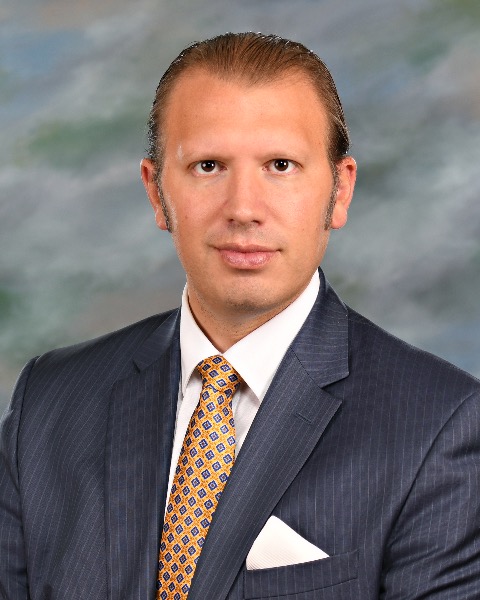Spine
What Drives Cost during Adult Cervical Deformity Surgery? Identifying High Cost Surgical Components and their Effect on Outcomes
What Drives Cost During Adult Cervical Deformity Surgery? Identifying High Cost Surgical Components and Their Effect on Outcomes

Peter G. Passias, MD
Professor
Duke University
Duke University Heath System
New Canaan, CT, US
Presenting Author(s)
Introduction: ACD surgery can carry significant cost burden. It is necessary to further study what high-cost components have greatest utility to patient outcomes.
Methods: Operative ACD patients up to 2Y data included. Components: Percutaneous screws, robotics with nav, DJK prophylaxis, BMP, approach (Anterior, Posterior), rods, distal screws, epidural, and kyphoplasty. Component cost was gathered by CMS.gov and published item rates, then totaled based on surgical technique. Utility data was calculated using ODI converted to SF-6D using published conversion methods. QALYs utilized a 3% discount rate to account for decline to life expectancy (78.7 years).
Results: 131 were included (56.5yrs, 72%F, BMI: 29.5kg/m2, CCI: 1.8). Greatest cost came from DJK prophylaxis ($34,189) and from BMP ($53,023), both p<.05. 21.2% (28) had robotic assistance, 28.6% (38) had BMP (1% small, 4% medium, 59% large). BMP cost differs by kit: small - 4.2 mg ($21,800), medium – 8.4 mg ($23,667), large – 12 mg ($25,617). Mean cost without robotics was higher ($18,666 Non-Robotic vs. $27,189 Robotic), equating to superior cost utility for robotics ($48,647 Non-Robotic vs. $66,858 Robotic, p<.05). Cost was greater for BMP vs without (BMP $53,023 vs Non-BMP $41,145, p<.05), with no significant difference in utility ($80,337 BMP vs $85,718 non-BMP, p=.076). Patients without DJK prophylaxis had lower cost at index, but lower cost utility at 2 years ($59,600 Non-Prophylaxis vs $45,099 Prophylaxis, p< 0.001). For approach, mean cost was lower for posterior ($1,836.90 P vs $2,367.75 A, p=.072). Kyphoplasty had average cost of $13,100 and provided significantly lower cost utility with increasing levels ($23,135.75 vs $28,871.89, p=.043). Percutaneous screws (mean cost $878), rods ($258), distal screws ($282), and epidural ($980) had no significant difference in utility. Overall, greatest utility was found in BMP, robotic assistance, and DJK prophylaxis, with approaches through posterior offering higher cost benefit.
Conclusion : Certain surgical components, such as BMP, robotics, and DJK prophylaxis, improve postoperative risk and cost utility despite increase in total cost. Thus, higher cost surgeries can result in better clinical, radiographic, and patient reported outcomes.
Methods: Operative ACD patients up to 2Y data included. Components: Percutaneous screws, robotics with nav, DJK prophylaxis, BMP, approach (Anterior, Posterior), rods, distal screws, epidural, and kyphoplasty. Component cost was gathered by CMS.gov and published item rates, then totaled based on surgical technique. Utility data was calculated using ODI converted to SF-6D using published conversion methods. QALYs utilized a 3% discount rate to account for decline to life expectancy (78.7 years).
Results: 131 were included (56.5yrs, 72%F, BMI: 29.5kg/m2, CCI: 1.8). Greatest cost came from DJK prophylaxis ($34,189) and from BMP ($53,023), both p<.05. 21.2% (28) had robotic assistance, 28.6% (38) had BMP (1% small, 4% medium, 59% large). BMP cost differs by kit: small - 4.2 mg ($21,800), medium – 8.4 mg ($23,667), large – 12 mg ($25,617). Mean cost without robotics was higher ($18,666 Non-Robotic vs. $27,189 Robotic), equating to superior cost utility for robotics ($48,647 Non-Robotic vs. $66,858 Robotic, p<.05). Cost was greater for BMP vs without (BMP $53,023 vs Non-BMP $41,145, p<.05), with no significant difference in utility ($80,337 BMP vs $85,718 non-BMP, p=.076). Patients without DJK prophylaxis had lower cost at index, but lower cost utility at 2 years ($59,600 Non-Prophylaxis vs $45,099 Prophylaxis, p< 0.001). For approach, mean cost was lower for posterior ($1,836.90 P vs $2,367.75 A, p=.072). Kyphoplasty had average cost of $13,100 and provided significantly lower cost utility with increasing levels ($23,135.75 vs $28,871.89, p=.043). Percutaneous screws (mean cost $878), rods ($258), distal screws ($282), and epidural ($980) had no significant difference in utility. Overall, greatest utility was found in BMP, robotic assistance, and DJK prophylaxis, with approaches through posterior offering higher cost benefit.
Conclusion : Certain surgical components, such as BMP, robotics, and DJK prophylaxis, improve postoperative risk and cost utility despite increase in total cost. Thus, higher cost surgeries can result in better clinical, radiographic, and patient reported outcomes.

.jpg)